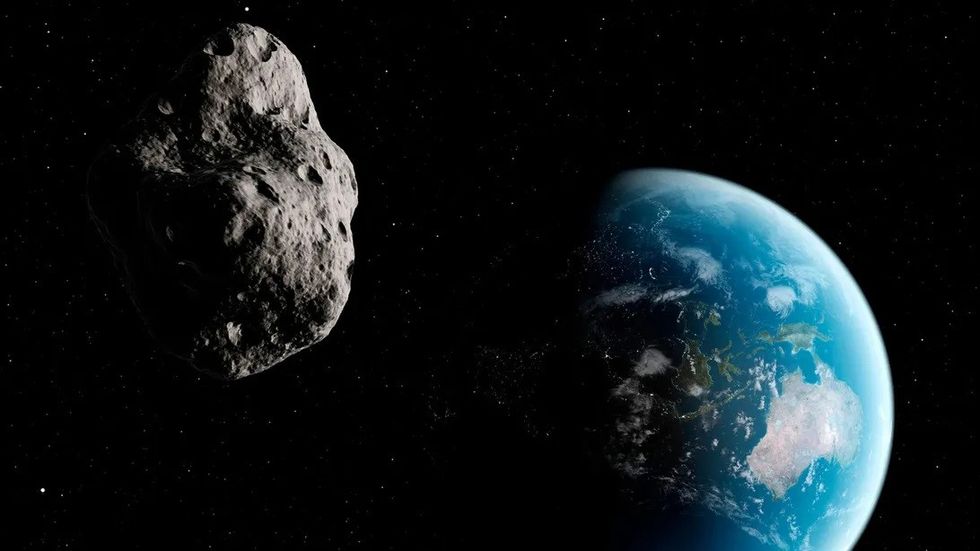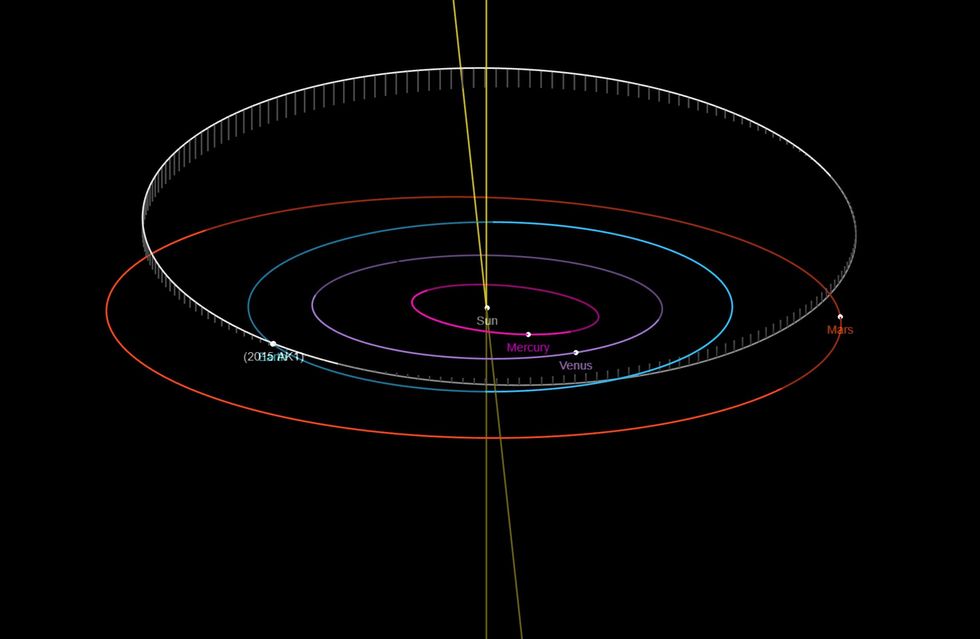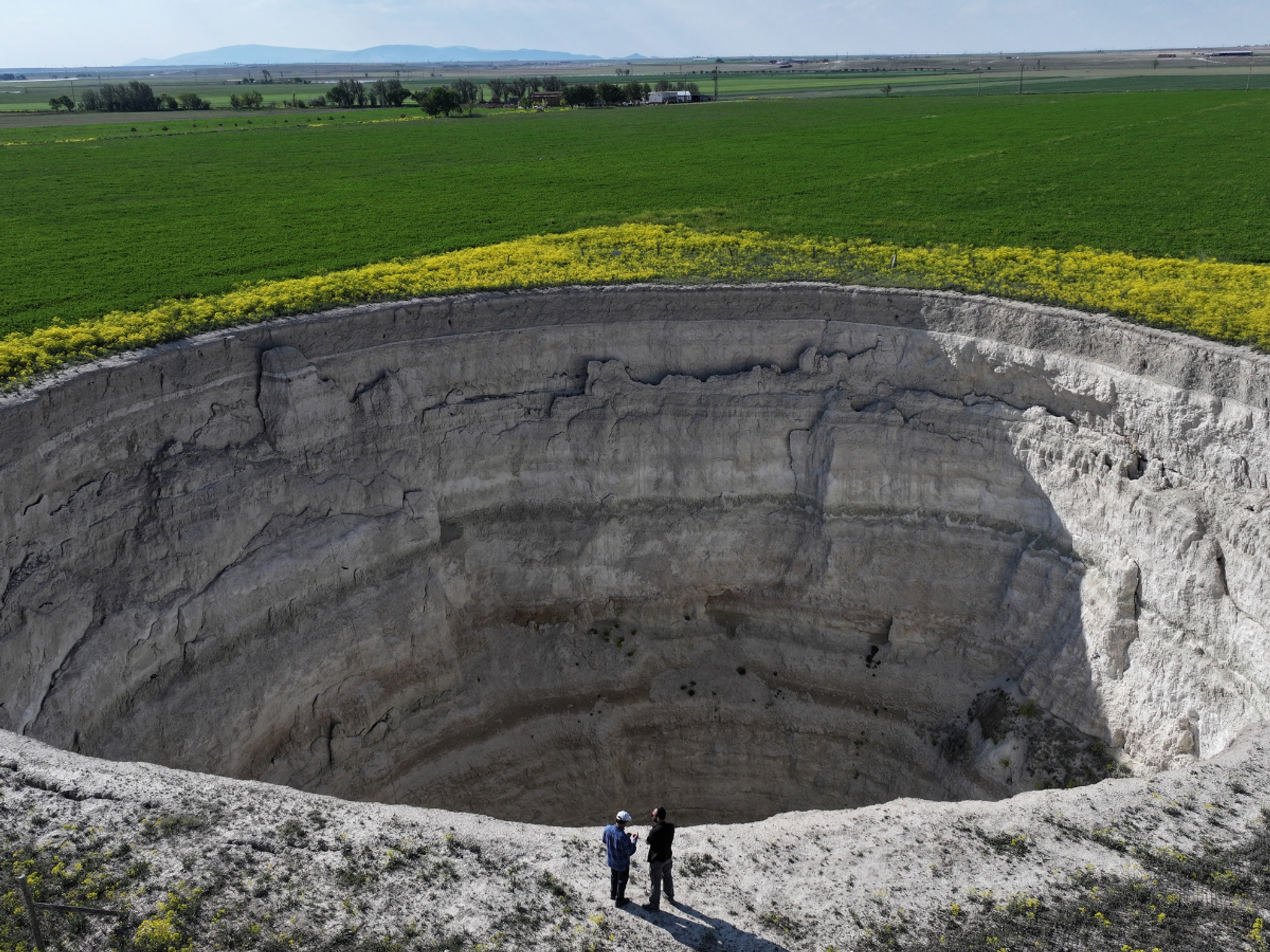Asteroid travelling faster than a ballistic missile to flash past Earth today says Nasa

The asteroid is the size of the Statue of Liberty and could flatten a city on impact
Don't Miss
Most Read
An asteroid measuring 40 metres in diameter is set to pass Earth today at a rip-roaring speed of almost 50,000 km per hour, according to Nasa.
The space rock, called 2015 AK1, will whizz past our planet at a distance of approximately 6 million km.
That might seem like a lot, but in the grand scheme of things – it’s further away than the Moon, but much closer than our nearest planet, Venus.
At 40m across, the asteroid is as wide as the Statue of Liberty, and double the size of the Chelyabinsk meteor which famously lit up Russian skies in 2013.

The asteroid will pass us by at nearly 50,000km per hour
| WikiCommonsThis shooting star will pass us at 47,608 kilometres per hour, which is nearly twice as fast as the world’s fastest Intercontinental Ballistic Missiles (ICBMs).
An asteroid of that size and speed would do far more damage than a missile if it veered off course and hit Earth – 2015 AK1 could flatten a large city on impact.
But despite its diameter, the asteroid passing by today has been deemed non-threatening by Nasa’s Planetary Defense Coordination Office (PCDO).
Another asteroid, Nereus, was labelled “potentially hazardous” by PCDO in 2021, and could be seen from the UK as it skimmed past.
LATEST DEVELOPMENTS:

Images from Nasa show just how close 2015 AK1 (white) will come to Earth (blue) today
|Nasa
It looks like Earth will get lucky this time, assuming 2015 AK1 isn’t knocked off course by interacting with our planet’s gravitational field.
This Near-Earth Object (NEO) is just one of a flurry of five near-misses in January alone, with the bigger and faster asteroid 2021 CZ2 set to zoom past us tomorrow.
2015 AK1 will be back soon enough and is set to pass us by in January 2033, but a little further away at a mere 29m km.
It belongs to the Apollo group of asteroids, named for the gigantic 1862 Apollo asteroid first discovered by prolific German astronomer Karl Reinmuth in 1932.
Images from Nasa’s Solar System Dynamics, which helps to visualise how everything in our solar system hurtles through space, show just how close this asteroid will come today.
Nasa can’t keep tabs on everything out there, with one ‘lost’ asteroid at risk of striking Earth this year.
But the space agency is developing cutting-edge technology for ‘planetary defence’, with 2022’s Dart mission marking their first attempt to move an asteroid in space.
The UK is also making strides in the space sector via Rolls-Royce’s UK Space Agency-funded lunar nuclear reactor which could enable humans to live and work on the moon in the 2030s.











